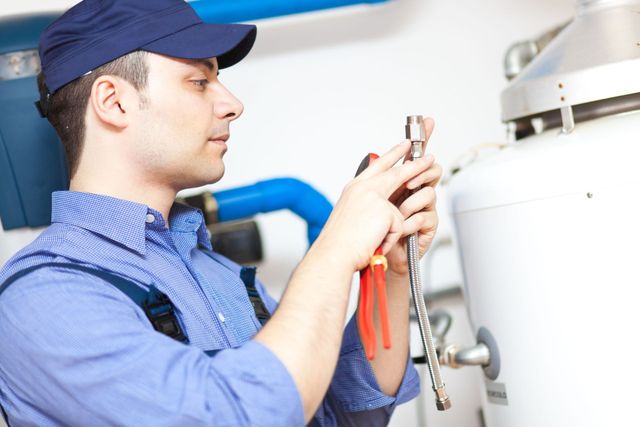Simple Steps to Caring for Your Home's Hot Water SystemSteps to Prolong the Lifespan of Your Home's Hot Water System Through Maintenance
Simple Steps to Caring for Your Home's Hot Water SystemSteps to Prolong the Lifespan of Your Home's Hot Water System Through Maintenance
Blog Article
Just how do you really feel on the subject of Tips on Maintaining a Water Heater?

Warm water is vital for day-to-day comfort, whether it's for a rejuvenating shower or cleaning dishes. To ensure your warm water system runs efficiently and lasts longer, regular maintenance is crucial. This post gives practical suggestions and understandings on exactly how to keep your home's warm water system to stay clear of disruptions and expensive repairs.
Introduction
Keeping your home's hot water system may appear difficult, however with a couple of easy steps, you can guarantee it operates efficiently for years to find. This guide covers whatever from recognizing your hot water system to DIY upkeep suggestions and recognizing when to employ professional aid.
Significance of Preserving Your Hot Water System
Regular upkeep not just extends the life-span of your warm water system however also ensures it runs effectively. Overlooking maintenance can lead to lowered effectiveness, higher energy costs, and even early failure of the system.
Indicators Your Warm Water System Demands Upkeep
Understanding when your warm water system needs attention can protect against significant concerns. Keep an eye out for indicators such as inconsistent water temperature, strange sounds from the heating system, or rustic water.
Purging the Water Heater
Flushing your water heater gets rid of debris buildup, enhancing effectiveness and lengthening its life.
Checking and Changing Anode Rods
Anode rods avoid deterioration inside the container. Inspecting and replacing them when worn is crucial.
Complex Issues Calling For Specialist Help
Instances include major leaks, electrical issues, or if your hot water heater is continually underperforming.
Regular Professional Maintenance Benefits
Professional maintenance can consist of comprehensive assessments, tune-ups, and making sure compliance with safety standards.
Examining and Changing Temperature Settings
Adjusting the temperature level settings guarantees ideal efficiency and safety and security.
DIY Tips for Maintenance
You can carry out a number of upkeep tasks yourself to keep your hot water system in top condition.
Checking for Leakages
Regularly inspect pipes and connections for leakages, as these can cause water damages and greater costs.
Comprehending Your Hot Water System
Prior to diving right into upkeep jobs, it's handy to comprehend the standard parts of your warm water system. Commonly, this consists of the water heater itself, pipes, anode rods, and temperature level controls.
Regular Monthly Maintenance Tasks
Regular regular monthly checks can help capture minor concerns prior to they intensify.
Testing Stress Relief Valves
Evaluating the pressure safety valve guarantees it operates appropriately and stops excessive pressure build-up.
Protecting Pipes
Protecting hot water pipes reduces warmth loss and can save power.
When to Call an Expert
While DIY upkeep is beneficial, some problems require specialist experience.
Conclusion
Normal upkeep of your home's hot water system is crucial for effectiveness, long life, and cost financial savings. By complying with these pointers and understanding when to seek specialist assistance, you can make certain a trustworthy supply of hot water without unforeseen disruptions.
How to Maintain an Instant Hot Water Heater
Before tinkering with your hot water heater, make sure that it’s not powered on. You also have to turn off the main circuit breaker and shut off the main gas line to prevent accidents. Also turn off the water valves connected to your unit to prevent water from flowing into and out of the appliance. 2. When you’re done, you have to detach the purge valves’ caps. These look like the letter “T” and are situated on either side of the water valves. Doing so will release any pressure that has accumulated inside the valves while at the same time avoid hot water from shooting out and burning your skin. 3. When the purge valves’ caps are removed, you have to connect your hosing lines to the valves. Your unit should have come with three hoses but if it didn’t, you can purchase these things from any hardware or home repair shops. You can also get them from retail stores that sell water heating systems. Read the user’s manual and follow it to complete this task properly. When the hosing lines are connected, open the purge port’s valves. 4. You should never use harsh chemical cleaners or solutions when cleaning your unit. Make use of white vinegar instead. It should be undiluted and you’ll probably use about 2 gallons. 5. Now flush your water heater. This task should probably take about 40 minutes. We can’t give you specific directions for this because the procedure is carried out depending on the type, model and brand of your heater. With that being said, refer to the user’s manual. 6. When you’re done draining the unit, you have to turn off the purge port valves again. Remove the hosing lines that you earlier installed on each of the water valves. Put the valve caps (purge port) back in their respective places and be very careful so as not to damage the rubber discs that are found inside these caps. 7. Now that everything’s back in place, check your user’s manual again to find out how to reactivate your water heating system. 8. Once it is working, turn one of your hot water faucets on just to let air pass through the heater’s water supply pipes. Leave the tap on until water flows smoothly out of it. https://www.orrplumbing.com/blog/2014/september/how-to-maintain-an-instant-hot-water-heater/

I was shown that write-up on How to Maintain Your Water Heater & Prolong its Life through a buddy on a different domain. Feel free to pause to distribute this content if you enjoyed reading it. Thank you so much for taking the time to read it.
Get A Free Estimate Report this page